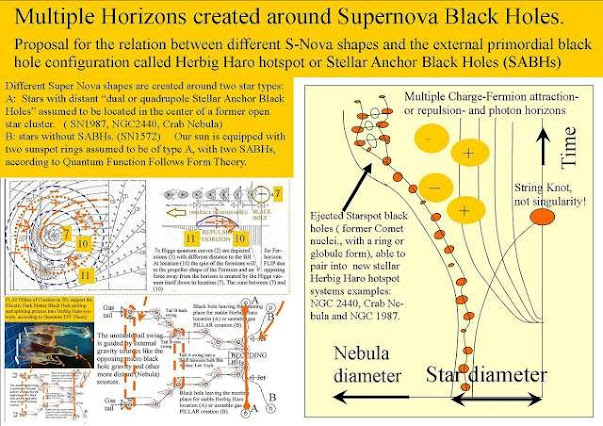JADES-GS-z13-0. Credit: NASA, ESA, CSA, and STScI, M. Zamani.
Producing much new stars and metal poor gas.
According to Q-FFF Theory, it should be a Herbig Haro system, producing multiple stars (see elongation) in the middle instead of one star, because both Herbig Black Holes are too big for one star and could produce multiple Dark Matter Black Holes around the first one.
See: Clumpy Dark Matter Around Dwarf Galaxies a Support for an Alternative Black Hole Theory According to the Quantum Function Follows Form Model. see: https://vixra.org/abs/1208.0031

see also: https://webbtelescope.org/files/live/sites/webb/files/home/webb-science/early-highlights/_documents/2022-061-jades/JADES_CurtisLake.pdf
See: Both Dragon shaped hotspots (in WMAP and Planck) forming the first Herbig Haro systems.
Later stars after the big bang made out of the smaller tadpole black holes after the first Supernova explosions of starspot black hole (Tadpoles).
Below The heart nebula is an example of the multiplication of Herbig Haro systems inside the created nebula of the expelled star spot black holes.
It is expected that the first star did the same very fast.

Other examples of dwarf galaxies see: Dwarf Ball Cluster Galaxy Candidates with more dark matter than our galaxy.
Below:
see: Stress testing ΛCDM with high-redshift galaxy candidates
Michael Boylan-Kolchin
The 6x star systems see: Credit: NASA, ESA, CSA, I. Labbe (Swinburne University of Technology). Image processing: G. Brammer (Niels Bohr Institute’s Cosmic Dawn Center at the University of Copenhagen)
see: What is Wrong with Current Physics to Explain Ball Lightning.









